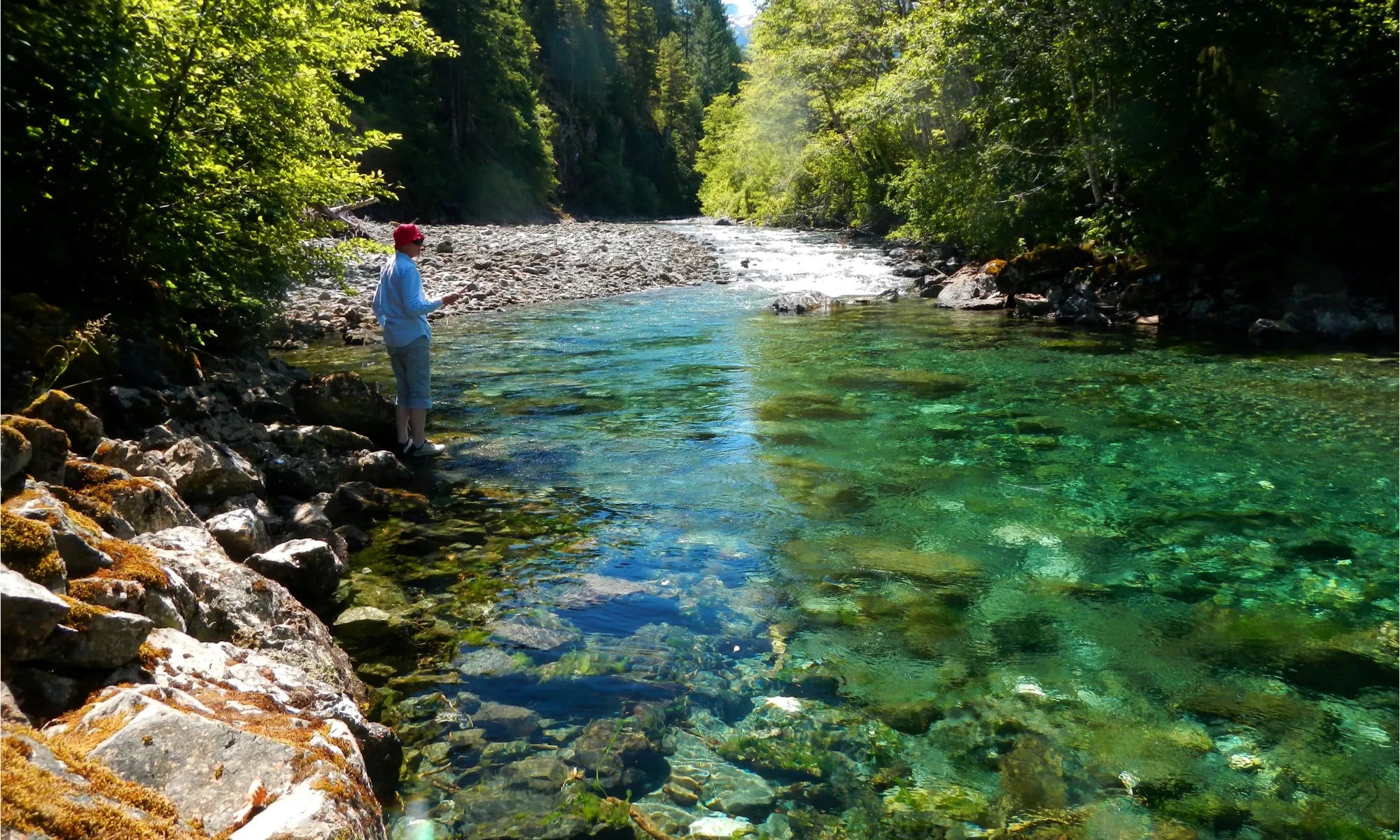Written by Martin Montejano
While the month of June offered great fishing in higher elevation creeks, some of those tributaries’ flows are starting to drop, and the fish are moving lower in the watershed. For the time being, I am back to fishing some of the more familiar waters in my area.
Coming back to the creeks I fish regularly helps shift my perspective from going after smaller fish to practicing some presentations and habits for fishing bigger waters in the next few months. While the creeks don’t often hold big trout, knowing popular holding spots for fish helps me to practice different tenkara techniques.
One of the things I revisit is bodily positioning in relation to where you’re casting. I have found that certain presentations seem to work better depending on where you’re standing on the water and where you’re focusing the placement of the kebari.
For example, I prefer to use sutebari while I am casting upstream at a diagonal angle, I tend to use pon pon more when the fly is anchored in an eddy across the stream, and I find gyakubiki is a bit more effective when letting the fly drift downstream from where I’m standing.
While you can dead drift from any point, I like to put myself in a spot that will allow me to make the most out of the dead drift. I look for a spot where I will be able to cast to the top of a pool and drift the fly all the way to the end without the risk of getting snagged or having to cut the drift short. It may not always be beneficial to drift the whole section, but try to set yourself up to let the fly pass through the fishiest-looking spots while avoiding too much slack building in the line.
The casting line may not always be taut during a dead drift, and the drape that occurs in the line can be used to your advantage. You can use the line to set up for different presentations of the fly, as well as to steer the fly where you may need it to drift. When casting across the flows into an eddy or just outside a seam, letting the line pull the fly back into the current might bring the kebari right in the range of a feeding trout. Adversely, you can use the same concept to bring the fly out of the current into slack water. This also works well with a bit of animation imposed by an upstream sasoi as mentioned in the previous article.
If fishing in the current is more productive where you’re at, the same idea of steering the fly can be used to recorrect a drift ahead of where a feeding lane might be. If you adjust the fly too close to where some fishy activity is, you may create an unnatural drift and raise a fish’s suspicion about the kebari. Try to keep track of where the microcurrents take the fly and place it in the right spot with a cast. If needed, readjust using the drape of the line and the rod tip.
One last bit I wanted to talk about in this article is the rising temperature. As the summer heat sets in, be conscious of the water temperatures too. Fishing in water above 65 degrees fahrenheit can be harmful to trout species. Many areas will implement hoot owl closures on larger rivers, but the same should be practiced for the tributaries in the watershed as well. Try limiting your fishing to the mornings or late afternoons while the days are hot. Along the lines of fish safety, be sure to bring a net, always wet your hands and tools before handling a fish, and limit their time outside of the water. Better fish handling practices when intending to release the trout helps to ensure that our fisheries stay healthy so that others can enjoy them as well!
Martin Montejano is a Northern California-based fixed-line angler. From spring-fed creeks in the mountains to rivers that run through deep-cut valleys, he fishes a multitude of waters in and around the Sierra Nevadas.
You can follow along as he shares his adventures and experiences at @sagehearttenkara on Instagram.
Martin’s favorite TUSA rod is the ITO™ 13′ / 14’7″ (adjustable)
